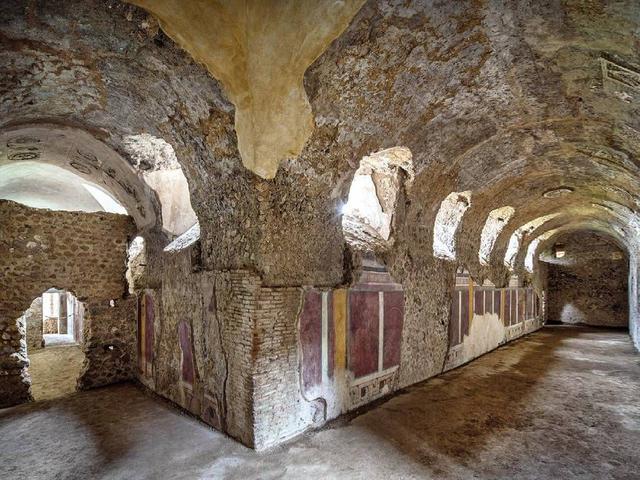House of Cryptoporticus

The House of Cryptoporticus in Pompeii is a fascinating archaeological site that offers a glimpse into the daily life of the ancient Romans. Located on the south side of Via delle Abbondanza at the junction with Vicolo di Pacius Proculus, this house was excavated in the early 20th century, revealing a wealth of historical and architectural treasures. Originally part of a larger mansion belonging to the Valery Ruth family, the House of Cryptoporticus is named after the covered passageway or corridor known as a cryptoporticus that once graced its grounds.
The house's cryptoporticus, which featured luxurious bathrooms, was later converted into a warehouse, showcasing the evolution of the space over time. As visitors enter the house, they are greeted by a long hallway that has lost much of its original plaster, leaving behind faded remnants of its former decorative glory. The lodge houses within the property stored helmets, hinting at the inhabitants who once called this place home. While it remains uncertain whether these individuals were the masters or servants of the house, it is likely that a family resided here, with the servants possibly staying behind as the owners attempted to flee during times of crisis.
The peristyle of the House of Cryptoporticus was a central feature, surrounded by brick pillar columns covered in plaster that supported the roof. A small interior garden graced the center of the peristyle, offering a tranquil retreat within the bustling household. Despite the damage inflicted by Allied bombing during World War II, remnants of the house's former grandeur can still be seen, such as the painted lararium on the north porch. The lararium, a family altar dedicated to household spirits and ancestors, features intricate paintings of serpents, Mercury, and a majestic peacock, all framed by vibrant colors and detailed designs.
Exploring the House of Cryptoporticus allows visitors to step back in time and imagine the lives of those who once inhabited this ancient dwelling. From the faded plaster walls to the remnants of a once-luxurious bathroom, every corner of the house tells a story of Roman life in Pompeii. As tourists wander through the corridors and peristyle, they can marvel at the architectural details and artistic touches that have survived centuries of history. Whether admiring the painted decorations of the lararium or pondering the fate of the house's former occupants, a visit to the House of Cryptoporticus is a journey into the past that is sure to captivate and inspire all who explore its halls.
© ChatGPT 3.5